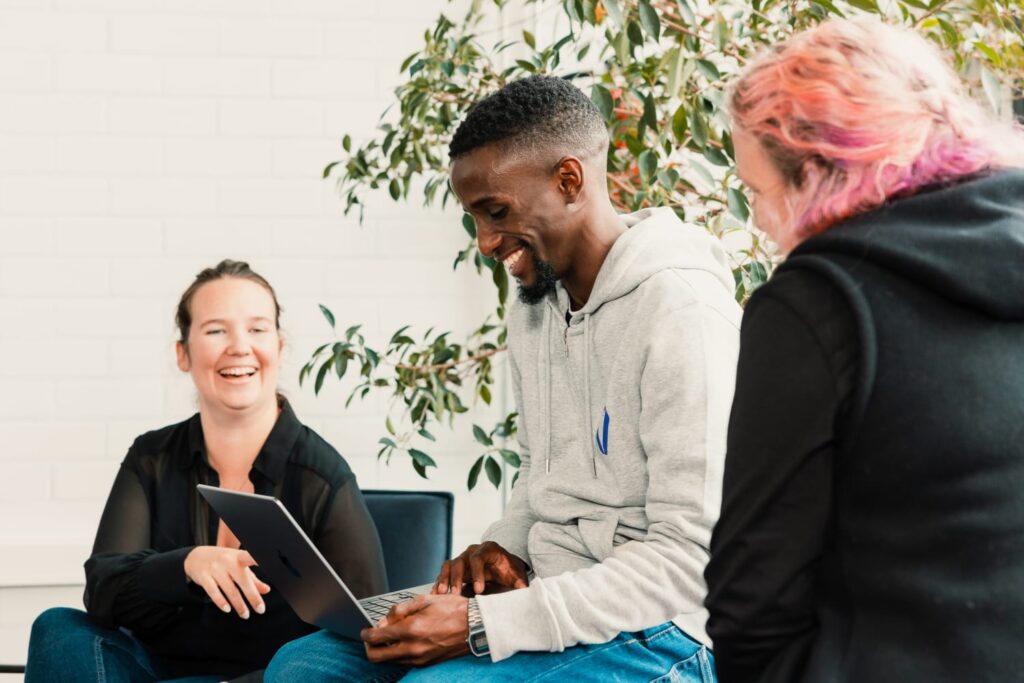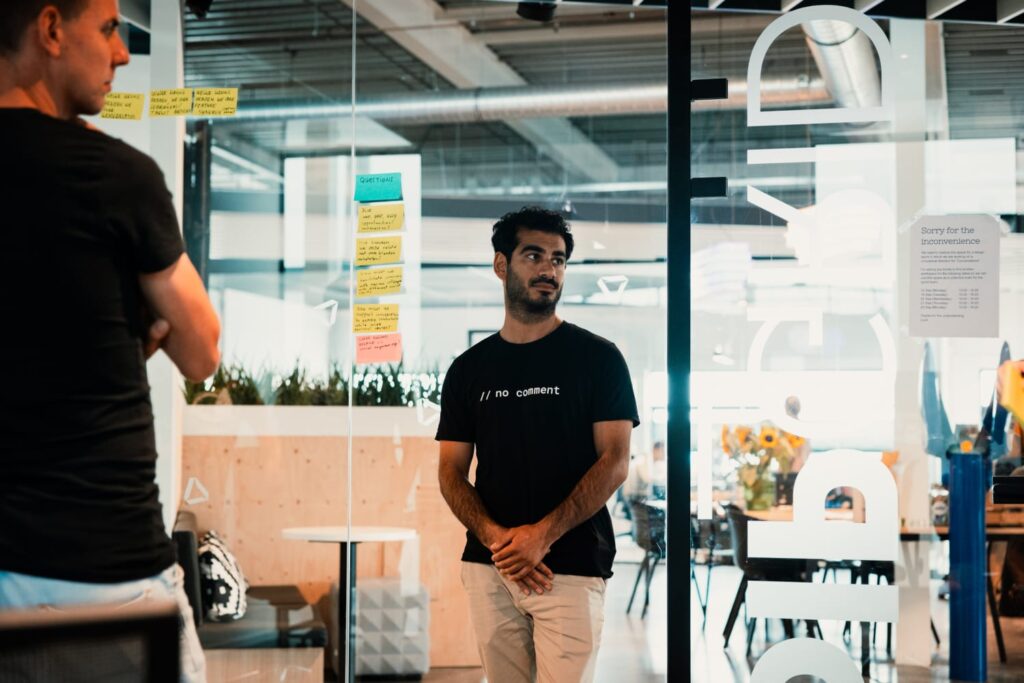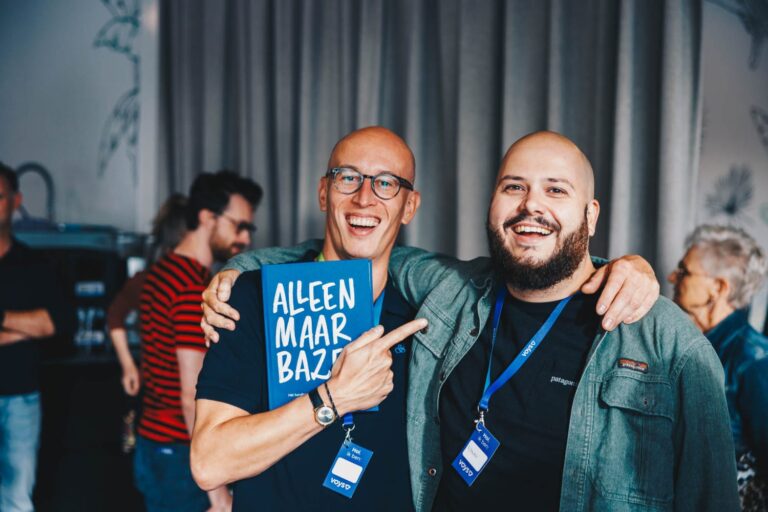This is how we protect our mission: steward ownership makes Voys future-proof


In my previous blog you could read about how we are changing the ownership structure of our company to steward ownership. This news prompted a lot of questions. What exactly is steward ownership? How does this protect the mission of the company? And how does the company and decision-making structure look like then?
In this blog I’ll answer these and more questions.
What exactly is steward ownership?
Steward ownership is a company structure that separates decision-making and financial interests. This enables the company to put the mission at the center, and make the profit serve the mission. That way important decisions will be made to serve the interests of the company’s mission, rather than that of the shareholders based on profit maximization. The profits the company makes benefits the mission and the society. Furthermore, steward ownership ensures self-determination, or said in other words: the company can manage itself.
There are various ways in which steward ownership can take shape. My colleague Pollien has been busy doing research on this topic for more than a year, and roped in some help from We Are Stewards. This organization is the advocate for steward ownership in the Netherlands. They guide companies in their transition to steward ownership and are giving us advice.
Together, we are researching which form of steward ownership fits Voys the best. That is a complex challenge, seeing as there is not a ready-made solution for companies that wish to take this step. To us it’s important that we find a way that serves our mission, a form that fits the organization and that is practically feasible.

Why would you care to protect your mission?
Companies are often founded with a company mission that reaches far beyond earning money. However, pressure from shareholders, investors or the market, can make it difficult to stick to that mission. There is a risk that the company’s direction will deviate from the intentions with which it was founded.
Steward ownership prevents this by separating voting rights and economic rights. The voting rights are in the hands of the people that are involved in the company and its mission, and not with the people with their own economic interests.
Voys connects people. We not only try to bring companies and their customers together in an equal way, we also try to encourage equality by embedding it in the way we work together and sharing the lessons we’re learning.
That is our mission. Connecting people equally. I find it important that we work on our mission every day, and that we keep this mission. That is why we are making the move towards steward ownership.
Companies that are already steward owned
World wide, but also in the Netherlands, more companies are choosing steward ownership as their company structure. I’m happy to share a few inspiring Dutch examples with you.
Efteling
At the Efteling, a Dutch theme park, they want to not only cherish their fairytale world, once created by Anton Pieck, but also guard it. Through steward ownership, they’re able to keep their mission, as there are no shareholders that control the decorations, the attractions or the merchandise.
Sprinklr
Sprinklr is an online Dutch plant shop with biologically grown garden plants and sustainable indoor plants. It’s their mission to recover biodiversity, which is why they don’t spray any toxic chemicals on their plants. Steward ownership ensures that Sprinklr can fully live out their mission without compromising on sustainability.
BuurtzorgT
BuurtzorgT is an organization that helps and supports people with (severe) psychiatric problems in the comfort of their own home. BuurtzorgT’s mission is to allow their clients to participate in society, prevent admissions and offer hope. Through steward ownership, BuurtzorgT maintains the space to put care of their clients first.

Steward ownership aligns well with self-management
At Voys we work without managers. This means that we have switched out managers and functions with a clear structure in which colleagues can have multiple roles. This structure helps us with the equal distribution of responsibility, power, and leadership within the organization. How you interpret the work within your roles is up to you. This gives you a lot of freedom and responsibility to shape your work yourself.
That freedom and responsibility is what makes Voys our company, but there is a limit within that ‘our’. We are now self-managing to a certain extent, because that self-management stops with the shareholders in the current shareholder structure. As of this moment, that’s my colleague Ben and I. I mentioned in my previous blog that I don’t think I’m entitled to all the economic value the company has. And, of course, that applies equally to power within the company.
This is also the reason that our colleague Pollien is guiding our transition to steward ownership, which is a project usually done by the founder. In this case, Pollien has taken on this responsibility effectively, because her knowledge and experience in this field are valuable contributions. Read: she can do this better than I can.
If we aim to bring self-management to the next level, steward ownership is the logical next step. Then self-management wouldn’t stop at the shareholder level, then the end-responsibility would truly lie with the people who safeguard the mission of the company.
What does a steward ownership structure look like?
This is the most common question: what does this steward ownership structure look like? To be honest, I wouldn’t be able to give a definitive answer to this question right now. What I can do is to tell you which three elements will most likely be included.
Voting rights
The first part of the puzzle is to invest in the voting rights, for example through a foundation yet to be established. This is a kind of guardian of the company that ensures that the company stays on track with its mission. The directors of the foundation are the so-called ‘stewards’ of the organization. Their job is to serve the continuity, mission and independence of the organization.
This way they’ll serve the needs of our colleagues, our customers and our philosophy. The stewards thus have an eye on the mission and for the health of the company. This piece of the puzzle ensures that the company governs itself, or is self-determining.
Profit rights
The second part of the puzzle is the profit right. This must also be invested somewhere. The entity that receives the profit right must take care to impactfully donate any excess profit to social initiatives. That is how we maximize our social value.
Security
The third piece of the puzzle is the judicial safeguarding of the structure and agreements. This can be done, for example, by issuing a so-called ‘Golden Share’ with certain approval rights to an independent party. We don’t need to establish anything for this. To make this possible, we could join the Golden Share Foundation. With a golden share, the Golden Share Foundation safeguards the structure and agreements of member companies. Future changes to the structure are reviewed by this foundation against the principles of steward ownership. They are a safeguard, while at the same time a key to making adjustments in a responsible way.
To prevent the Golden Share Foundation from blocking changes that could benefit the company, it has a Board of Stewards. A steward from each member company sits on this council. Together, these stewards can decide to change certain agreements of an affiliated company.
The exact structure of the steward ownership at Voys will become clear in the coming period. Among other things, we are investigating whether this way of security suits us. The transition to steward ownership is quite a quest, so a lot can still change. In addition, becoming steward owned is not an end in itself for us. It is a means by which we future-proof our company and keep it mission-driven. What that future holds, no one knows, so a steward ownership structure is never finished, but grows as the organization evolves.

This is how I experience the transition to steward ownership
Steward ownership is a relatively unknown company structure, and things like a Golden Share Foundation is quite new. That means that in the existing systems, fiscal and legal, there is not yet a ready made solution to apply steward ownership to your organization. That regularly makes it a challenging process.
However, it is also an incredibly fun process. It suits Voys to walk the (relatively) unbeaten paths, or create the path ourselves, if necessary. In our organizational culture, it is natural to learn, experiment and, in doing so, to make mistakes. And that is exactly what we do. It’s the fastest way to learn and grow.
Interested in our steward ownership journey?
Then you can subscribe to my newsletter. Of course I will continue to write stories about everything we experience during this adventure. We have already done a lot of preparatory work, and in 2024 it is time for the execution. I’m really excited about it, and I look forward to sharing what I discover along the way with you!
More stories to read
On our blog we post about a lot of stuff, just go for it and read some posts for your own fun.
Go to the blog
